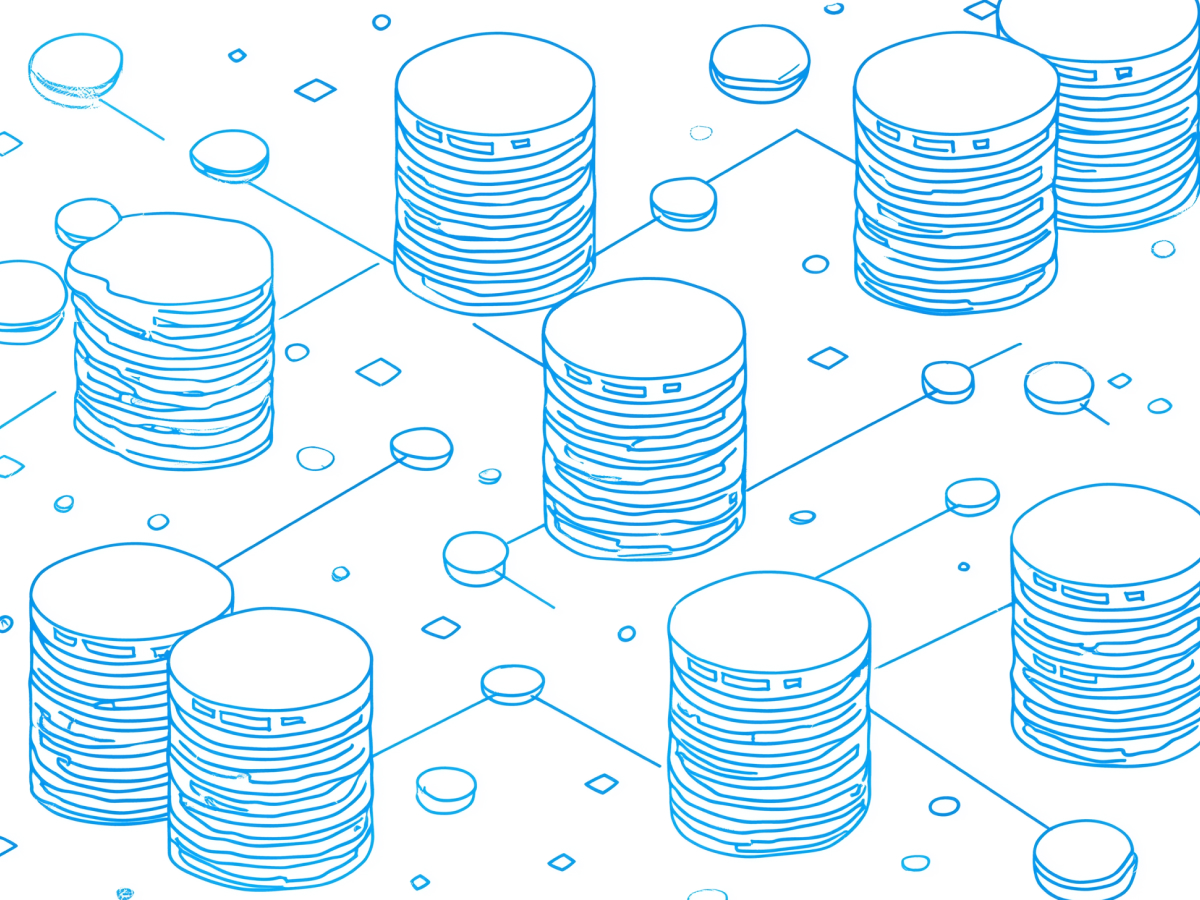Digital transformation requires scalable systems
Imagine running a global eCommerce platform on Black Friday. Your systems must keep up with the flood of traffic and make sure that every transaction is fast, smooth, and reliable. If they can’t, your reputation, and bottom line, takes a hit.
So, how do you achieve this? First, let’s talk microservices architecture. Instead of one massive, inflexible system, break it down into smaller, independent pieces. Think of it as replacing a bulky, all-in-one machine with a collection of efficient, specialized tools. For example, an online retailer can scale its inventory system separately from its payment processing system. Targeted scaling is efficient and cost-effective.
Then there’s cloud computing, which I’d argue is one of the most transformative technologies of our time. Services like AWS or Google Cloud allow you to expand or shrink resources on-demand, paying only for what you use. It’s elastic and incredibly powerful. Add load balancing to the mix, distributing traffic across servers, and you’ve got a setup that won’t buckle under pressure. And if your data is becoming a bottleneck, consider database sharding. When dividing your database into smaller, manageable pieces, you speed up processing and allow multiple tasks to run simultaneously.
Finally, stateless systems are the secret sauce for horizontal scaling. In externalizing session data, you can spin up new servers without worrying about syncing information. This simplicity is invaluable for large-scale systems. But here’s the nuance: scalability isn’t just about throwing more resources at a problem. It’s about designing systems that grow intelligently, balancing cost, performance, and reliability.
Reliability ensures continuity under stress
Reliability is about trust. Users expect systems to work, period. Even a few seconds of downtime can ripple through your business like a tsunami. Reliability isn’t just a technical goal; it’s a business imperative.
The foundation of reliability is redundancy and failover systems. Redundancy means having backup components ready to step in if something breaks. Failover mechanisms automatically switch to these backups when issues arise, making sure users are unaffected.
“When one of Apple’s data centers faces problems, DNS-level health checks immediately reroute traffic to a healthy peer region. That’s reliability in action.”
But let’s take it a step further with proactive health monitoring. Tools like Prometheus and AWS CloudWatch act as the nervous system of your infrastructure, detecting potential issues before they spiral out of control. Combine this with chaos engineering, intentionally introducing failures to test system resilience, and you’re building a system designed to withstand real-world disruptions. Netflix, for instance, uses Chaos Monkey to simulate random outages, making sure their services are rock solid.
Then there’s the human factor. Automated recovery processes, enabled by tools like Terraform, allow teams to rebuild environments quickly and without manual errors. And to prevent cascading failures, circuit breakers temporarily halt requests to failing services, giving them time to recover without dragging down the rest of the system.
Here’s the key: reliability isn’t about avoiding failures altogether, that’s impossible. It’s about creating systems that fail gracefully, without users even noticing. Yes, it takes planning, investment, and vigilance. But the payoff? Trust, loyalty, and long-term success.
Balancing scalability and reliability
Here’s the truth: scalability and reliability aren’t competing goals, they’re complimentary. A system that scales but isn’t reliable will collapse when pushed too hard. Conversely, a reliable system that doesn’t scale will fail when demand surges. Striking the right balance is where the magic happens.
Start with elasticity. Elastic systems, like those powered by auto-scaling groups in the cloud, dynamically add or remove resources based on real-time traffic patterns. Picture a water faucet that adjusts flow depending on how many people are using it, no waste, no overflow, just precision.
But elasticity alone isn’t enough. You need observability. Monitoring, logging, and alerting provide a window into how your system behaves under different conditions. Think of observability as the dashboard of a high-performance car, it gives you the data to make informed adjustments. Tools like Grafana and Datadog can provide this clarity, helping you balance performance and reliability seamlessly.
Testing is the next piece of the puzzle. Systems need to be tested at scale using tools like Apache JMeter or LoadRunner. Simulate peak traffic, push the limits, and identify weak points before your users do. And don’t forget distributed architectures. In spreading workloads across multiple servers, data centers, or even regions, you eliminate single points of failure and create a safety net for your operations.
Here’s the nuance: balancing these elements isn’t a one-time effort. It’s iterative. You’ll need to adapt as your business grows and as new technologies emerge. The good news? With the right mindset, you’ll build systems that thrive in the face of complexity and demand. It’s not easy, but then again, nothing worth doing ever is.
Emerging technologies increase both scalability and reliability
The future of scalability and reliability lies in using the right technologies, the ones that genuinely solve problems. The pace of innovation is relentless, and staying ahead means adopting tools and practices that amplify your system’s capabilities while reducing complexity. Let’s break down some of the most impactful technologies.
Serverless computing is huge. Platforms like AWS Lambda or Azure Functions allow systems to scale automatically without you needing to manage infrastructure. Its event-driven resources are allocated precisely when needed and released immediately afterward. This eliminates waste and simplifies operations, freeing your team to focus on development, not maintenance. For instance, an eCommerce site might use serverless functions to process payments during a flash sale, instantly scaling up for peak demand and back down when the rush subsides.
Next, there’s containerization and orchestration. Tools like Docker and Kubernetes bring agility to deploying and managing applications. Docker packages everything your application needs into a container, making it portable and consistent across environments. Kubernetes, on the other hand, orchestrates these containers, automating tasks like scaling, failover, and resource allocation across clusters.
Edge computing takes performance and reliability to the next level. By processing data closer to users, on edge servers rather than centralized data centers, you reduce latency and improve user experience. This is particularly valuable for applications that demand real-time responsiveness, like IoT devices or online gaming platforms.
Finally, AI and machine learning are revolutionizing how we manage systems. AI-driven tools analyze demand patterns, predict traffic surges, and detect anomalies faster than any human team could. For example, AI can anticipate a sudden spike in demand during a major event and preemptively allocate resources to handle the load.
Here’s the nuance: these technologies don’t operate in isolation. They complement each other. A serverless architecture might be combined with edge computing for optimal speed and reliability, while Kubernetes makes sure containers are deployed efficiently. The key is to integrate these tools thoughtfully, aligning them with your business needs.
Resilient systems depend on skilled, adaptable teams
Even the best technology in the world is only as good as the team managing it. Resilient systems don’t happen by accident, they’re built by resilient teams. This is where the human element comes into play, and it’s just as important as the technical components.
“Training and upskilling are non-negotiable. Regular workshops, certifications, and hands-on training make sure your team is able to handle new tools, technologies, and methodologies.”
But technical skills alone aren’t enough. Cross-functional collaboration is what makes resilient systems possible. Scalability and reliability are multi-disciplinary challenges, involving developers, infrastructure engineers, operations teams, and even business stakeholders. When these groups work together, they create cohesive strategies that address both technical and business needs. For instance, developers may design microservices, while infrastructure teams make sure those services can scale in the cloud.
A culture of continuous improvement is another cornerstone. Post-incident reviews and retrospectives are not about assigning blame, they’re about learning. When something goes wrong, your team should analyze the root cause, identify lessons learned, and implement changes to prevent recurrence. This iterative process strengthens your systems over time.
Here’s the nuance: building a resilient team isn’t just about hard skills and processes. It’s also about mindset. Encourage innovation, reward problem-solving, and create a sense of ownership. Teams that feel empowered to experiment and take calculated risks often develop the most creative and effective solutions.
Ultimately, resilient systems and resilient teams go hand in hand. One enables the other. In investing in your people, giving them the tools, training, and autonomy they need, you make sure your technology thrives in the face of challenges. And isn’t that what leadership is all about? Building teams that are as dynamic, adaptable, and innovative as the systems they create?
Key takeaways
- Scalability drives business resilience: Scalable systems are key for handling demand surges without compromising performance. Leaders should invest in microservices, cloud computing, and load balancing to optimize efficiency and adapt to fluctuating workloads.
- Reliability protects business continuity: Reliable systems safeguard operations from failures. Decision-makers should prioritize redundancy, failover mechanisms, and proactive health monitoring to minimize disruptions and maintain user trust.
- Use emerging tools for competitive edge: Serverless computing, containerization, and edge computing increase both scalability and reliability. Executives should evaluate these technologies to reduce latency, simplify operations, and ensure seamless user experiences.
- AI improves predictive capabilities: AI-driven tools optimize resource allocation and detect anomalies faster than traditional systems. Leaders should integrate AI to anticipate demand surges and preempt system failures, improving efficiency and reliability.
- Build and empower resilient teams: A skilled, adaptable team is critical for maintaining and scaling reliable systems. Invest in training, foster cross-functional collaboration, and cultivate a culture of continuous improvement to drive innovation and operational excellence.





